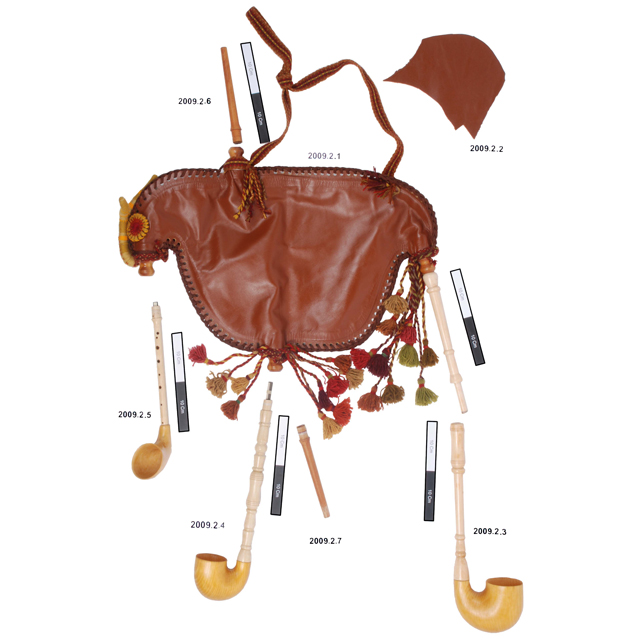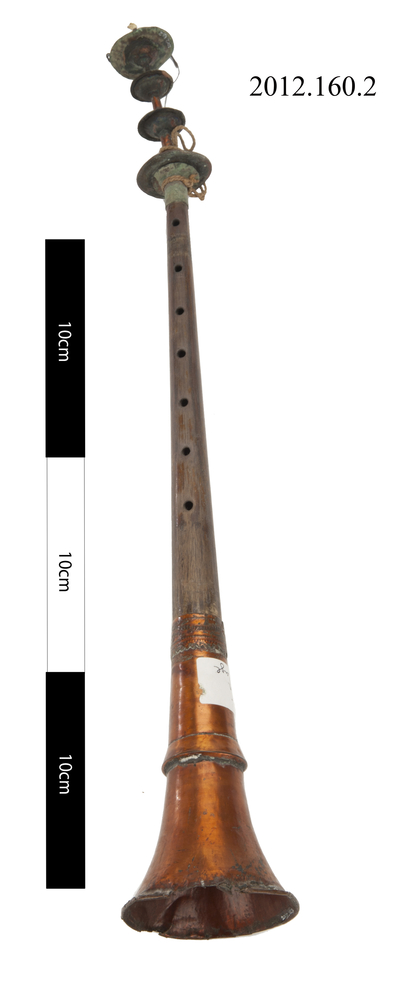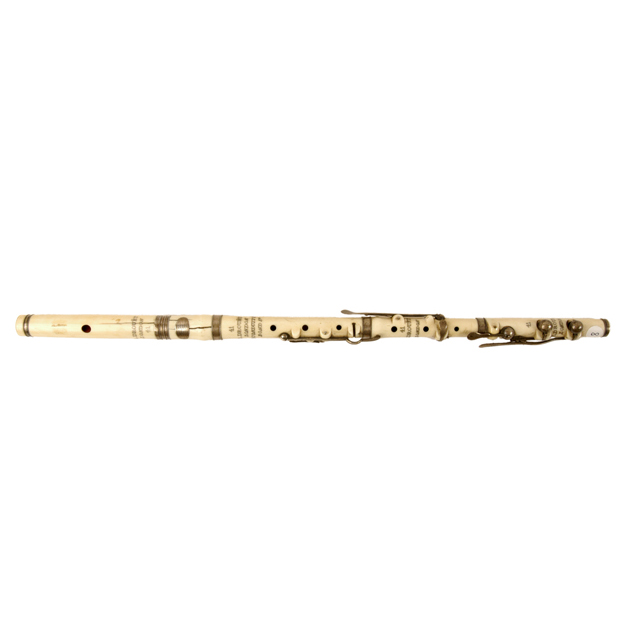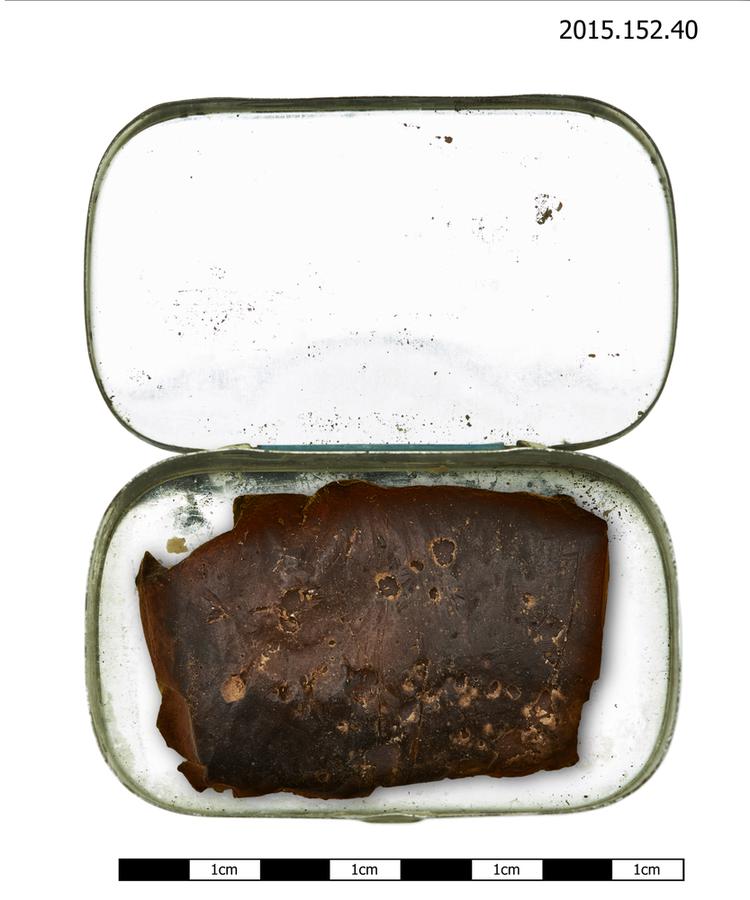
Duda, bagpipe, with leather bag (2009.2.1), spare patch of leather (2009.2.2), 'huk' - bass drone (2009.2.3), tenor drone (2009.2.4), 'perabor' - chanter (2009.2.5), 'soska' - blowpipe (2009.2.6), and wooden stopper in the form of a blowpipe to stop tenor drone stock when not in use (2009.2.7). The bag is of tanned leather in a symmetrical shape with curving sleeves at either end. Four stocks of turned wood, varnished but undecorated, one beneath each sleeve, one midway along the top edge and one midway along the bottom edge. The edge seam is stitched with a dark red cord. There is also a shoulder strap of longitudinally striped ribbon and tassels hanging from each stock. The sleeve of the stock above the chanter has applied decoration in wool and wire of the horns and eyes of a goat's head. The blowpipe and tenor drone stopper have a valve formed of a circle of leather covering their lower rims and attached by a nail to the rim. The chanter and two drones each have a single percussive reed consisting of a rectangular piece of beige plastic tied to the side of a cylindrical metal head at the end of the tenon. The chanter is cylindrical with seven finger holes and one thumb hole. The uppermost finger hole is doubled and all are slightly recessed. The sounding pipes are made of a light coloured wood, probably maple, and each has an upturned bell "rahaven'" made from two pieces of darker wood (possibly birch) at the distal end. The drones are each formed of two joints with the connecting tenon on the upper joint.
The duda bagpipes have a long history in Belarusian culture and can be traced back as far as the 16th century. Their use was particularly associated with traditional music of the North of the country, although their popularity waned there through the course of the 20th century. Goats and geese are among the animals traditionally used in the production of the instrument, the skin of the goat for the bag and the quills of the goose feathers for the reeds. The association with the goat is demonstrated by the decoration on the bag of this instrument, which represents a goat's head above the chanter stock. Many bagpipe styles of Eastern Europe, for example those of Hungary and Romania, represent the head of the goat even more graphically by carving it from wood to from the chanter stock. The upturned bells of the chanter and drones, which are known as rahavens in Belarus, are traditionally prized items. They are usually made of birch and are often transferred from instrument to instrument and handed down through the generations of musical families. The maker of this instrument stated that several examples of this bagpipe had been ordered for use by one of the youth groups convened by the president.






